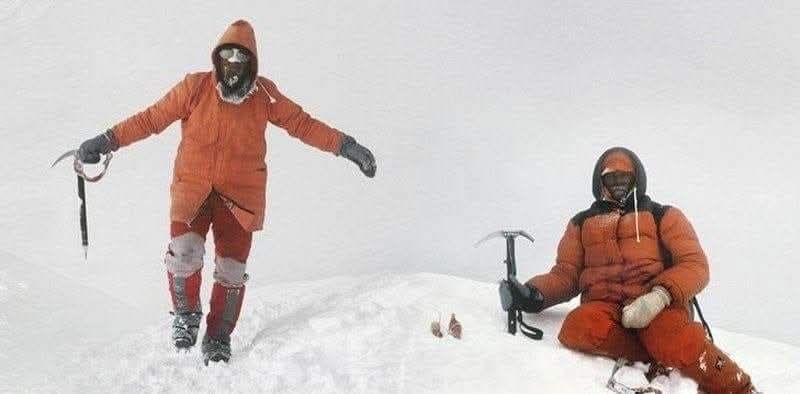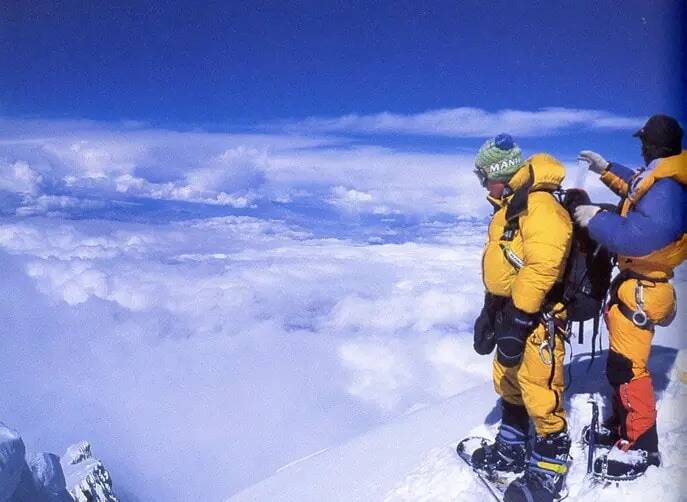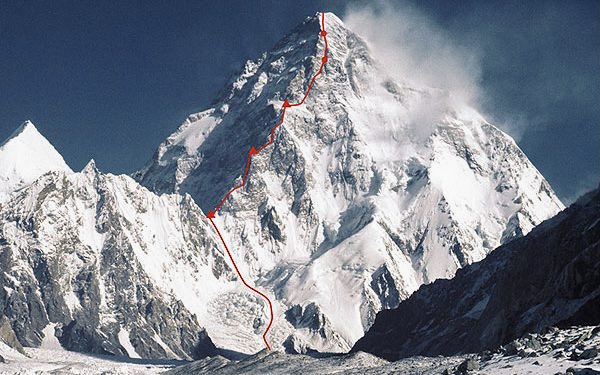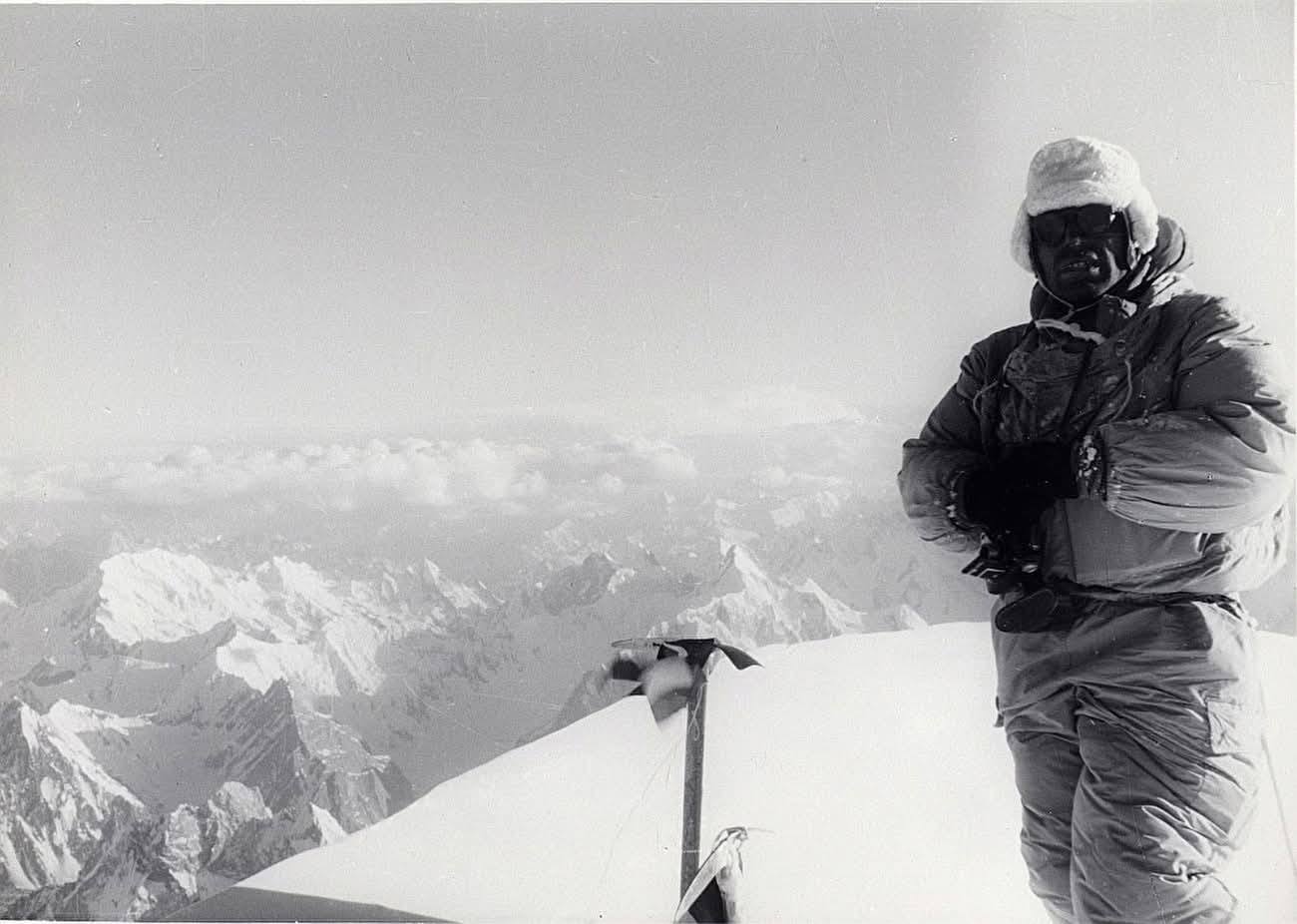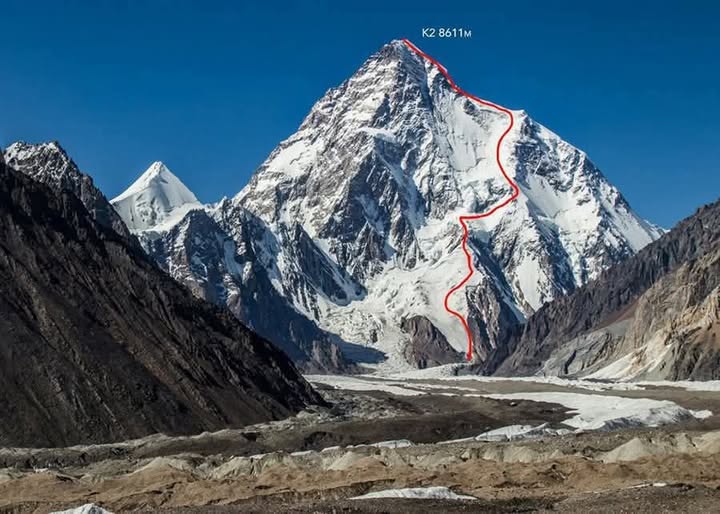In the summer of 1986, beneath the sweeping flanks of K2’s South Face, two men moved toward the unknown. Jerzy Kukuczka and Tadeusz Piotrowski, Polish alpinists, seasoned in hardship, fueled by something deeper than ambition.
The mountain needs no introduction. K2, the “Savage Mountain,” had defeated many. But the south face? It remained untamed. Steeper. Wilder. With a reputation sharpened by icefalls and avalanche gullies.
The invitation came from Karl Herrligkoffer. An international expedition, large in size but split in will. Kukuczka was relieved, he didn’t have to organize it. They had permits for Broad Peak and K2. But most climbers, upon seeing the challenge, shrank from even the standard route.
Not the Poles.
They split into groups. Kukuczka and Piotrowski chose the untried heart of the South Face. Their Base Camp was set on June 7 at 5,070 meters, joining a crowd of nations: Italians, French, Americans, Austrians, and Koreans. The Karakoram was alive with dreams that summer.
Kukuczka had already touched this face. In 1982, he and Kurtyka had made an alpine-style attempt. This time, joined by Swiss climbers and German Toni Freudig, the team hoped to move fast and light. But hopes crack on ice.
On June 9, they reached 6,000 meters. Camp I.
By June 10, it had begun: withdrawals. Swiss climbers Beda Fuster and Rolf Zemp pulled out. On June 11, the team fixed ropes to 6,200 meters. A day later, the last Swiss, Diego Wellig, left too.
Only Kukuczka, Piotrowski, and Freudig remained.
On June 19, with 25-kilo packs, they pushed up. Camp II was pitched below a serac at 6,400 meters. Ropes and food were ferried. On the 21st, they climbed a steep ridge alongside the ice cliff. 500 meters of rope were fixed.
Then Freudig left.
Now there were two.
June 22. Two Poles, two days of food, and a face that refused mercy. They climbed icefields so steep they felt vertical. Bivouac at 6,950. Then 7,400. Thin air. Deep fatigue. On June 24, clouds swallowed the sky. They cached gear on pitons and descended through a snowstorm.
Seven days of waiting followed. At Base Camp, the wind gnawed at nerves. When the sun returned on July 3, so did their resolve. This time, they would go for the summit.
Up again. Camp II. Then to the gear stashed at 7,400. They pushed to 7,800 meters and bivouacked under stars. Above them loomed the “Hockey Stick”—a couloir of ice twisting skyward. They climbed it. At 8,200 meters, another bivouac. The wind was colder. The walls steeper.
Then the headwall.
A hundred-meter vertical obstacle, impossible to see from below. They chose a line. V+ in the Polish Tatra. Brutal at sea level. Unimaginable at 8,000 meters. They had one 30-meter rope. Four pitons. It took Kukuczka all day to climb a single rope length.
No summit. Just exhaustion. That night, they ran out of gas. One canister lost to carelessness. They melted snow over a candle. The water tasted like wax, but it was life.
The next day, they left everything, tent, bags, food. Just bivy sacks and cameras. They climbed into thin air. By noon, they reached the Abruzzi Ridge at 8,300 meters. Easier terrain, but snow buried every step. Time slowed. At 6:25 p.m., the slope flattened.
Kukuczka stood on the summit of K2.
He raised two scarves, gifts from his sons, tied them with the Polish flag to his axe. Then Piotrowski arrived. They embraced, ecstatic, breathless, broken.
For Kukuczka, it was his twelfth 8000er. For Piotrowski, his first.
Dusk descended like a curtain. They turned to go, but Kukuczka’s headlamp died. Blind in the dark, they bivouacked again, 8,300 meters, shivering in tattered bivy sacks. The cold bit through skin. Sleep came in short, painful bursts.
Dawn.
Snow sloughed off in waves. The descent was harder than imagined. They rappelled blindly, unsure of the route. Only 400 meters of descent by nightfall. A second night bivouacked in misery. No water. Soaked gear. The wind whispered death.
But morning brought a break in the storm. A glimpse of the route. Korean tents below. Kukuczka moved quickly, but Piotrowski lagged.
They rejoined above the slope where, in 1953, Art Gilkey had died. It was steep. Deadly. They had no rope, Piotrowski had forgotten it at the bivouac. Kukuczka descended first. The ice was bulletproof.
He warned Piotrowski to go left.
Then it happened.
One crampon slipped. Then the other flew off. Piotrowski fell, straight into Kukuczka, who barely braced. But there was no catching him.
Tadeusz Piotrowski disappeared into the void.
Kukuczka climbed down slowly, every meter a lifetime. Five and a half hours to descend 200 meters. At the Korean camp, he searched for a miracle. There was none.
He found food, gas, and sleep. Twenty hours of it.
On July 11, he descended further. At 6,800 meters, a lone Korean climber helped him. Radio contact was made. Base Camp already knew. Rescue teams had searched, but Piotrowski was gone.
Four days later, Kukuczka flew out by helicopter.
He looked back at K2, the face he had dreamed of, and felt… nothing.
Victory, yes. But the price was too high.


